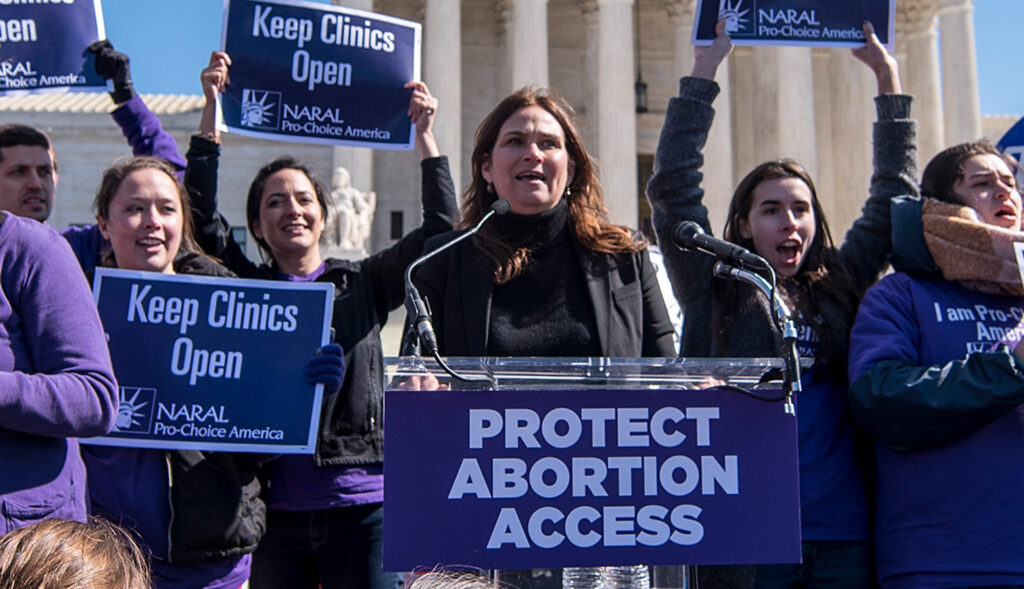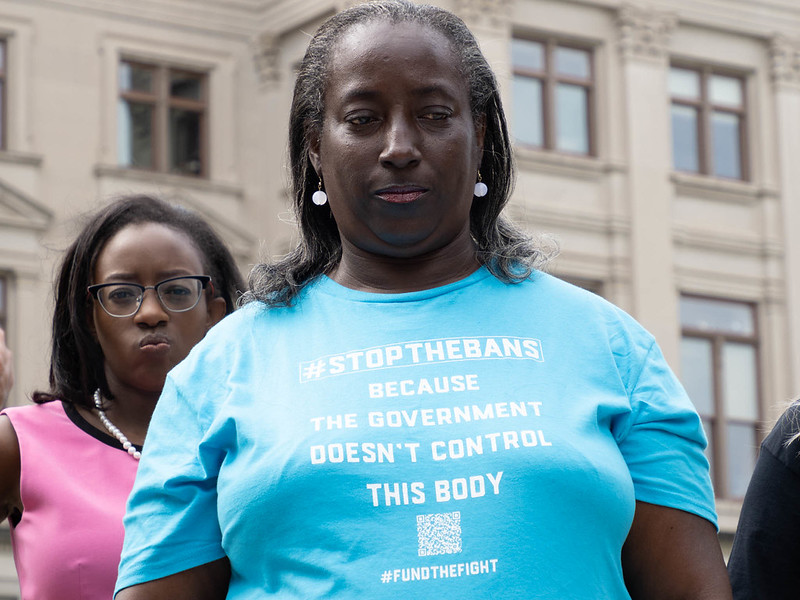
Throughout the ongoing COVID-19 crisis, anti-abortion advocates have capitalized on the chaos to attack reproductive rights.
Although abortion is time-sensitive, officials throughout the U.S. declared it a nonessential service, denying women the right to reproductive justice under the guise of pandemic control. The move was swiftly condemned by many major medical organizations—but opportunistic attacks on reproductive freedom remain abundant.
A woman’s right to choose is under siege—which is why it is important to critically examine how the media covers it.
A new report from NARAL Pro-Choice America and Global Strategy Group (GSG) found most abortion coverage in mainstream media to be “deeply, and problematically, politicized.”
“The right to abortion is at risk in an unprecedented way,” said Kristin Ford, national communications director for NARAL. “And the media has a really important role to play in how they shape the conversation and the public discourse around abortion.”
The study drew on a random sample of more than 300 articles published in major news outlets and related Twitter activity from January to June 2019. They analyzed how political leaders, reporters and the general public discussed abortion.
Below are some of the study’s most notable findings.
Reporters portray abortion as more controversial than it actually is.
News coverage suggests that Americans are much more divided on the issue of reproductive rights than they really are. Mainstream reporting focuses on the division between pro-choice Democrats and anti-abortion Republicans. But the American public is not as polarized as this coverage suggests.

Seventy-seven percent of Americans, across party lines, support the landmark abortion ruling in Roe v. Wade, and 78 percent support abortion in at least some circumstances—solidifying a decisive outpouring of support for legal abortion.
Yet only 9 percent of articles mentioned this broad support.
“There is such a widespread societal conception that this is a highly polarizing issue,” said Ford. “It becomes sort of a self-fulfilling prophecy, because people think it’s that, so they report it that way. And as people read it, they continue to believe it as that way.”
Abortion is almost always covered as a political issue.
Overwhelmingly, NARAL found that abortion is treated as a political matter, rather than a health care matter. The analysis found that many articles relied heavily on political rhetoric and rarely contextualized content with scientific research, physician’s voices or real-life abortion stories.
Abortion coverage spikes around legislation and litigation, and NARAL found that more than 77 percent of articles about abortion were written by political, legal, breaking news or general assignment writers—rather than health reporters.
This matters because political writers are three times less likely to reference a physician and four times less likely to include medical research than health writers.

Reporters use misleading anti-choice rhetoric without explanation.
The hyper-politicization of abortion extends to the language reporters use, which is widely tinged with anti-abortion inflammatory rhetoric. When reporters employ such terms, they often present them neutrally, without explaining their role as deliberate disinformation.
More than half of articles analyzed included emotionally-charged anti-choice rhetoric—using phrases such as “heartbeat bills” and “infanticide”—without addressing their medical inaccuracy.
Additionally, writers tend to include quotes from pro-choice activists and anti-abortion extremists to define terms, portraying straightforward questions of truth and fiction as a matter of political opinion.
Abortion coverage often lacks expert voices.
Reporters rarely ground their coverage in the science of abortion. Mainstream articles seldom reference medical research, and they largely fail to include those most directly affected by abortion: medical professionals and women.
Just 13.5 percent of articles analyzed quoted a physician, and only 8 percent referenced the lived experience of someone who has had an abortion.
This lack of input is particularly alarming because mainstream abortion coverage is rife with false and misleading medical information. For example, many reports reference “heartbeat bills” that seek to limit the right to an abortion after six weeks of pregnancy.
Without context, readers might not understand such bills would prohibit legal abortion before many women even know they are pregnant—a key fact included in only 27 out of 91 articles mentioning “heartbeat” restrictions. Consulting medical experts and people who have had abortions would combat this disinformation.
Abortion coverage uses polarizing language.
Language used in articles reviewed reinforces perceptions of abortion as a highly controversial issue. NARAL found that 17 percent of articles described abortion as “divisive,” and many articles included words such as “extreme,” “extremist,” “radical” and “fringe” to characterize pro-choice politicians and voters and anti-abortion policies.
Reporters can do better. Here’s how.
The study offers several recommendations for reporters for writers to improve their coverage of abortion.
NARAL suggests writers avoid using inflammatory anti-choice rhetoric without providing proper context, consult medical experts, and base pieces in the understanding that pro-choice policies enjoy majority support.
Finally, and perhaps most importantly, writers should include the real-life stories of people who have had abortions—those who ultimately bear the consequences of their reporting.
The decision to terminate a pregnancy is highly personal. Yet in mainstream news coverage, reproductive rights are often reduced to political episodes, detached from their real-world implications.
“Thinking about the people behind the words and behind the rhetoric is especially important,” said Ford. “This issue is so important for people to determine their futures.”
In an country where the right to safe and legal abortion is rarely secure, NARAL’s report sheds light on the humanity behind this hot-button topic.





